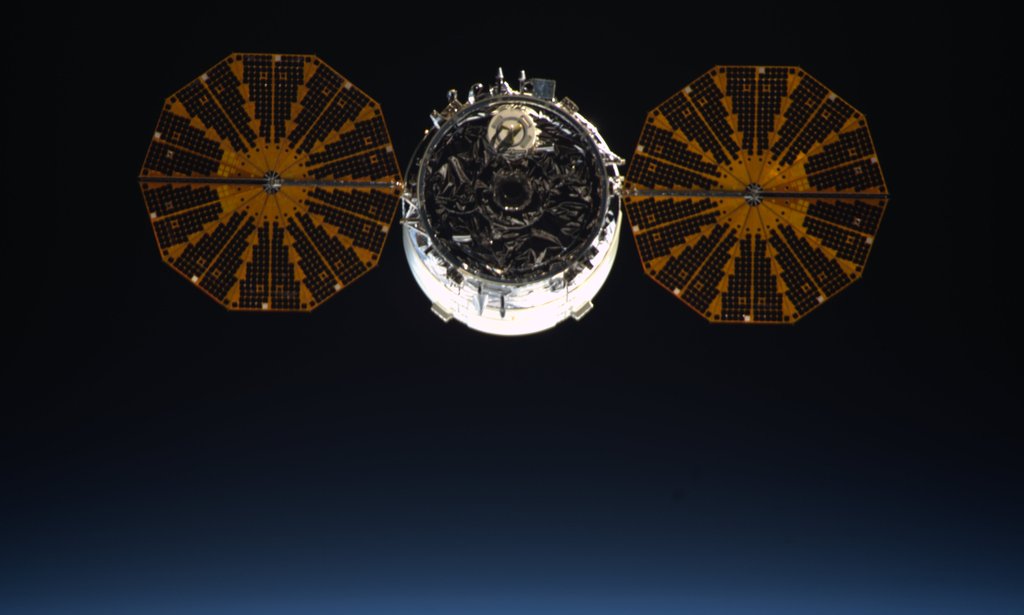
In keeping with tradition, Orbital ATK’s next Cygnus cargo mission to the International Space Station (ISS)—conducted under the language of a $1.9 billion contract, signed with NASA back in December 2008—will bear the name of a former U.S. astronaut. Scheduled for launch on Tuesday, 22 March, the OA-6 mission will honor Air Force Col. Rick Husband, who commanded the final voyage of shuttle Columbia in early 2003. Yet there exists a key difference between this Cygnus mission and the four previous successful flights of the unpiloted cargo ship: for Husband piloted STS-96, the first shuttle docking at the ISS in May 1999. “This mission is the first one to be named after an astronaut who actually participated in building the space station,” Orbital ATK announced. The company added that it was “proud to add Rick’s name to our legacy of cargo delivery to this outpost in space and to honor the memory of this brave and dedicated crew”.
Husband’s link with Orbital ATK—which represents the result of a February 2015 merger between Orbital Sciences Corp. and parts of Alliant Techsystems (ATK), Inc.—is further strengthened by the fact that next to him in the commander’s seat on Discovery’s flight deck during STS-96 was an astronaut who went on to a senior leadership role within the company. Kent Rominger, who has accrued more flight time aboard the shuttle (about 1,600 hours) than any other human being, during his five space missions, as well as serving a four-year tenure as chief of NASA’s astronaut corps, joined ATK in the fall of 2006 as Vice-President of Advanced Programs, within the Launch Systems Group.
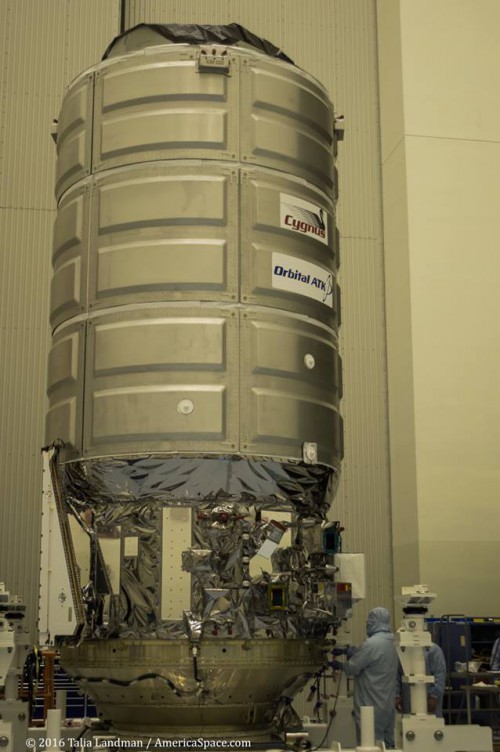
As outlined recently by AmericaSpace’s Mike Killian, this mission represents the sixth Cygnus to be launched towards the orbital outpost. It comes in the aftermath of the initial “Demonstration” mission, flown by Orbital Sciences Corp., in the fall of 2013, which was designated “ORB-D”. Satisfactory completion of this flight allowed Orbital to press into the main part of its $1.9 billion Commercial Resupply Services (CRS) contract with NASA, which called for eight dedicated Cygnus missions by 2016 to deliver a total of 44,000 pounds (20,000 kg) of equipment and supplies to the ISS. Two successful flights—ORB-1, launched in January 2014, and ORB-2, which arrived at the station the following July—were conducted by Orbital, before calamity struck in October 2014 when ORB-3 was lost, seconds after liftoff, due to a catastrophic first-stage turbopump failure within its Antares 130 booster.
Orbital’s home-grown Antares, which first flew in April 2013, was always intended for upgrade to its “230” configuration, with the Russian-heritage AJ-26 first-stage engines due to be phased out in favor of the RD-181. During the downtime, at least two future Cygnus missions were manifested onto United Launch Alliance (ULA) Atlas V boosters, the first of which—OA-4—flew successfully to the space station in December 2015. (The change of mission nomenclature from “ORB” to “OA” came in the aftermath of the transition from Orbital to Orbital ATK.) This particular Cygnus also trialed the new “Enhanced” variant of the spacecraft, equipped with new solar arrays and a larger Pressurized Cargo Module (PCM). In fact, OA-4 lofted 7,383 pounds (3,349 kg) of cargo to the ISS, marking Cygnus’ heaviest-yet payload, some 40 percent greater than its predecessors.
From the first Cygnus mission, a tradition was created, in which each spacecraft would be named in honor of an individual who had contributed either to Orbital Sciences’ goals or, more broadly, to the commercial space exploration agenda. ORB-D was named for veteran shuttle astronaut and senior Orbital executive G. David Low, who played a key role in the Commercial Orbital Transportation Services (COTS) program, before his untimely death in February 2008. The first dedicated Cygnus, ORB-1, was named for former shuttle commander C. Gordon Fullerton, whilst ORB-2 paid tribute to five-time astronaut Janice Voss. The ill-fated ORB-3 honored former Mercury astronaut Deke Slayton and, after the failure of this flight, his name was revived for OA-4.
With last month’s successful departure of OA-4, original plans called for the OA-6 mission—also boosted aloft by an Atlas V—to fly on 10 March. In readiness for launch, the Common Core Booster (CCB) first stage of the Atlas was delivered via the ULA Delta Mariner barge to Port Canaveral in early February. Equipped with a Russian-built RD-180 engine, the first stage is fed by a combination of liquid oxygen and a highly refined form of rocket-grade kerosene, known as “RP-1”, and provides about 860,000 pounds (390,000 kg) of propulsive yield for the first four minutes of the flight. Soon after its arrival at the Cape, the first stage was integrated with the Centaur upper stage, whose single RL-10C oxygen/hydrogen engine will support a 14-minute “burn”, late in the ascent, to deliver Cygnus precisely into low-Earth orbit. By mid-February, Cygnus’ Service Module (SM) had been mated to its PCM.
Unfortunately, the 10 March target quickly proved untenable, when it was revealed that black mold spores had contaminated a pair of cargo bags. This effected an approximate two-week delay until 22 March. “Microbial analysis found evidence of common black mold,” NASA’s Dan Huot told AmericaSpace recently. “The decision was made to disinfect all cargo, including cargo already loaded onto Cygnus, before completing vehicle packing. The initial mold response is complete with the full re-disinfection of all cargo bags in the initial cargo shipment for OA-6. In addition, the teams verified full disinfection of a planned second shipment of cargo currently being packed for transport to KSC.”
Aboard Cygnus’ PCM will be a wide range of research payloads, devoted to studies of combustion, meteors, regolith, adhesion and 3D printing in space. Drawing upon recent advances in 3D printing technology—trialed aboard the ISS during by NASA astronaut Barry “Butch” Wilmore in the fall of 2014 during Expedition 42—the Additive Manufacturing Facility (AMF) will provide a permanent location for on-demand repair and production capabilities and is double the size of its predecessor 3D printer. “AMF allows for immediate repair of essential components, upgrades of existing hardware, installation of new hardware that is manufactured and the manufacturing capability to support commercial interests on the ISS,” NASA has explained. The facility will be installed into an ExPRESS rack and is expected to endure throughout the remaining operational lifetime of the space station itself, which is currently anticipated to end in December 2024.
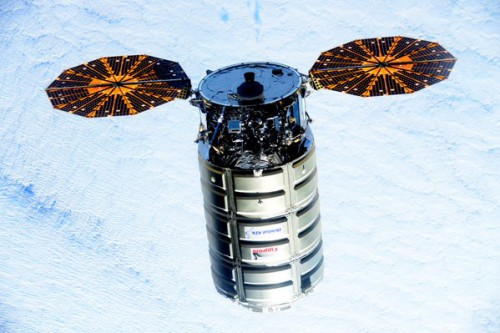
Principal Investigator Aaron Joseph Parness’ Gecko Grippers experiment, also aboard the OA-6 Cygnus, seeks to demonstrate a tool for a new adhesive gripping device, capable of sticking on-command to a variety of surfaces. “The technology promises to enable many new capabilities,” it has been explained, “including robotic crawlers that could walk along spacecraft exteriors; grippers that use a touch-to-stick method to catch and release objects; and sensors that can work on any surface and reused multiple times.” Utilizing microscopic angled “hairs”, the grippers’ adhesion can be activated and deactivated, based on a slight sliding motion, caused by the geometry of the structure. Three sizes of Gecko Grippers, capable of handling loads of up to 20 pounds (9 kg) will be evaluated over the course of the coming year. The Defense Advanced Research Projects Agency (DARPA) has previously tested gecko-type technologies for Earth-based surveillance, with the possibility that similar techniques could be employed to inspect Micrometeoroid Orbital Debris (MMOD) or other damage on the space station’s exterior.
Another OA-6 payload to be installed aboard the Destiny lab—specifically in its Earth-facing (or “nadir”) viewing location at the Window Observational Research Facility (WORF) rack—is the Meteor camera. As its name implies, this investigation seeks to perform high-resolution video and still observations of meteors entering Earth’s atmosphere. It will operate for about two years. Developed by a team headed by Principal Investigator Michael Fortenberry of Southwest Research Institute (SwRI) of San Antonio, Texas, it features a visible spectroscopy instrument, with infrared filters, to examine meteors’ chemical composition as they begin the entry process into the upper atmosphere. “Meteor uses image analysis to provide information on the physical and chemical properties of the meteoroid dust, such as size, density and chemical composition,” NASA explained. “Since the parent comets or asteroids for most of the meteor showers are identified, the study of the meteoroid dust on-orbit provides information about the parent comets and asteroids.”
Looking ahead to future exploration goals beyond low-Earth orbit, the Strata-1 experiment will seek to investigate regolith—the impact-shattered soil found on the Moon, asteroids, comets and other airless worlds—in an effort to better understand its behavior and properties. Led by Principal Investigator Marc Fries of NASA’s Johnson Space Center (JSC ) in Houston, Texas, the year-long Strata-1 experiment will expose a range of simulated regolith materials in a set of “tubes” to the prolonged microgravity conditions aboard the ISS. These materials include pulverized meteoritic materials and terrestrial materials. Video imagery, acquired through four station-based cameras and LED lighting, will monitor changes in the samples’ stratigraphy, their size-sorting and their particle-migration characteristics.
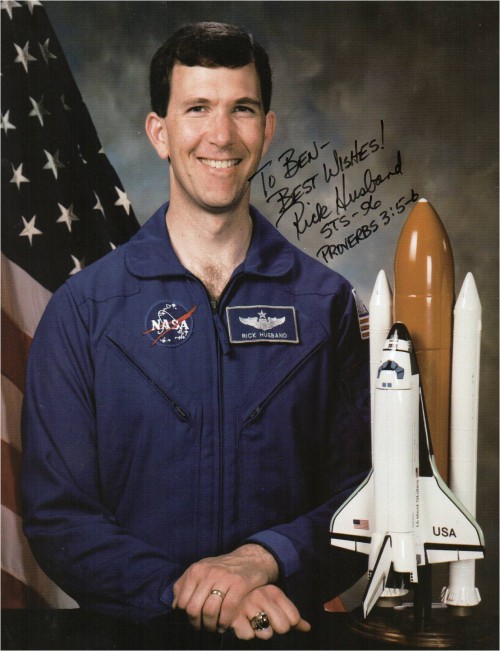
Of all of OA-6’s experiments, the Spacecraft Fire Experiment-I (Saffire-I) has drawn particular attention. Its goal is to intentionally ignite a large-scale, controlled fire inside the empty Cygnus after its departure from the ISS, which—assuming an on-time launch and nominal berthed mission—should occur around 20 May. The experiment will begin about 24 hours after the spacecraft departs the station. Led by Principal Investigator David Urban of NASA’s Glenn Research Center (GRC) of Cleveland, Ohio, the aims of Saffire-I are to create the conditions “to study fires of practical size in low gravity”, in order to better validate approaches for spacecraft fire protection. For obvious reasons, large-scale combustion experiments cannot be safely executed aboard the ISS itself and the Saffire-I instruments will specifically focus upon oxygen usage and the dynamics of flame propagation inside a spacecraft.
Previous combustion science experiments were conducted on several shuttle missions—including Rick Husband’s ill-fated STS-107—and continue to be a primary research thrust in the Microgravity Science Glovebox (MSG) aboard the space station’s Destiny laboratory. However, by necessity they have been relatively limited in scale. “Prior experiments have been limited to samples no larger than 4 inches (10 cm) in length and width,” NASA noted. “This stands in stark contrast to the full-scale fire safety testing that has been conducted in habitable structures on Earth, including mines, buildings, airplanes, ships, etc. The large differences between fire behavior in normal and reduced gravity results in a lack of experimental data that forces spacecraft designers to base their designs on terrestrial fires and fire standards. While this approach has been successful thus far, there is inherent risk due to the level of uncertainty.”
Saffire is expected to be conducted during three Cygnus missions in 2016 and its data is expected to be at least an order of magnitude larger than any previous microgravity flame-spreading investigation. However, it has been stressed that the experiment remains “very limited” in the amount of data and test conditions that it can investigate and it expected that a maximum of 20 gigabits of scientific data will be returned.
For Saffire-I, a single large material sample—measuring about 1.3 feet (0.4 meters) wide and 3.1 feet (0.94 meters) in height—will be ignited by means of a hot wire along its edge. This will burn at an anticipated Cygnus cabin atmosphere, whose oxygen concentration will approach 21 percent by volume, thereby mirroring conditions aboard the ISS. During the experiment, ambient temperatures and broadband radiative emissions, oxygen/carbon dioxide concentrations, flame stand-off distances and pressure conditions will be monitored, as well as visual imagery via a pair of video cameras and LED illumination. Since the Cygnus will be destroyed at the end of its mission, all sample-burn results will be recorded, their data compressed and downlinked to ground stations.
Be sure to “Like” AmericaSpace on Facebook and follow us on Twitter: @AmericaSpace
.
Missions » ISS » COTS » CYGNUS » OA-6 »



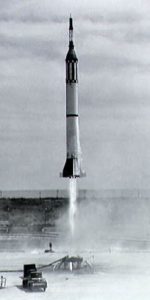
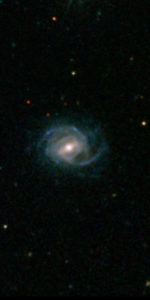
2 Comments
2 Pings & Trackbacks
Pingback:Spectacular Atlas V Launch Carries Rick Husband Back to Space « AmericaSpace
Pingback:A Cygnus Came A’Calling: Orbital ATK’s OA-6 Cargo Ship Arrives at Space Station « AmericaSpace